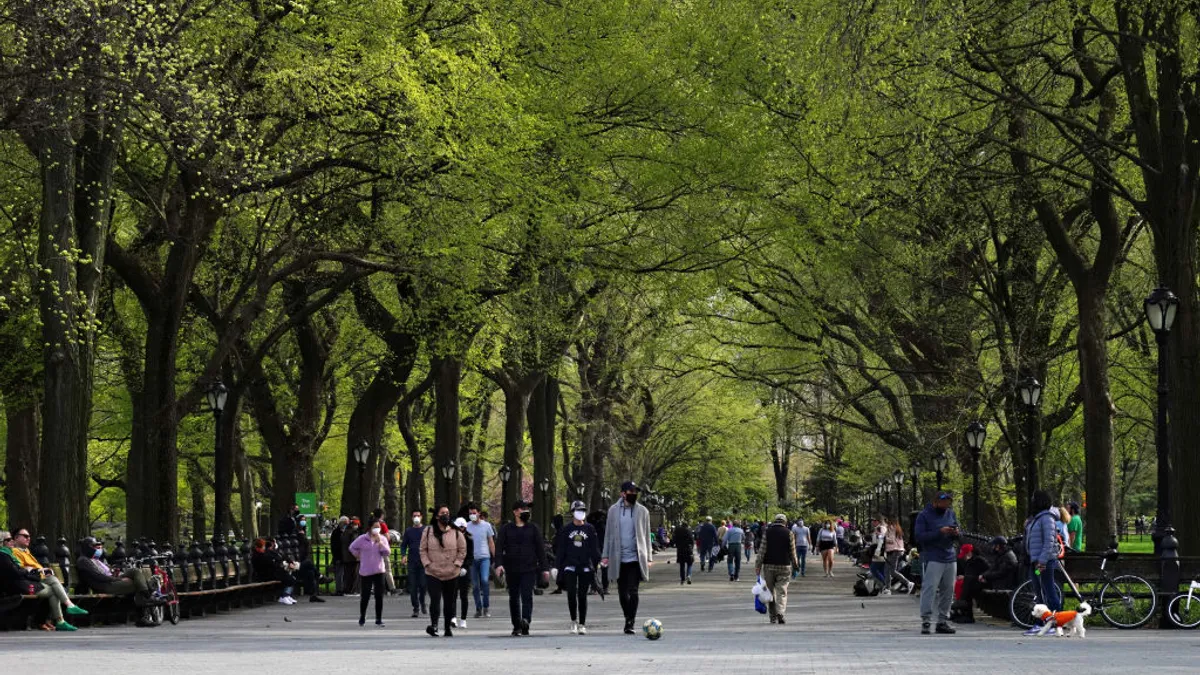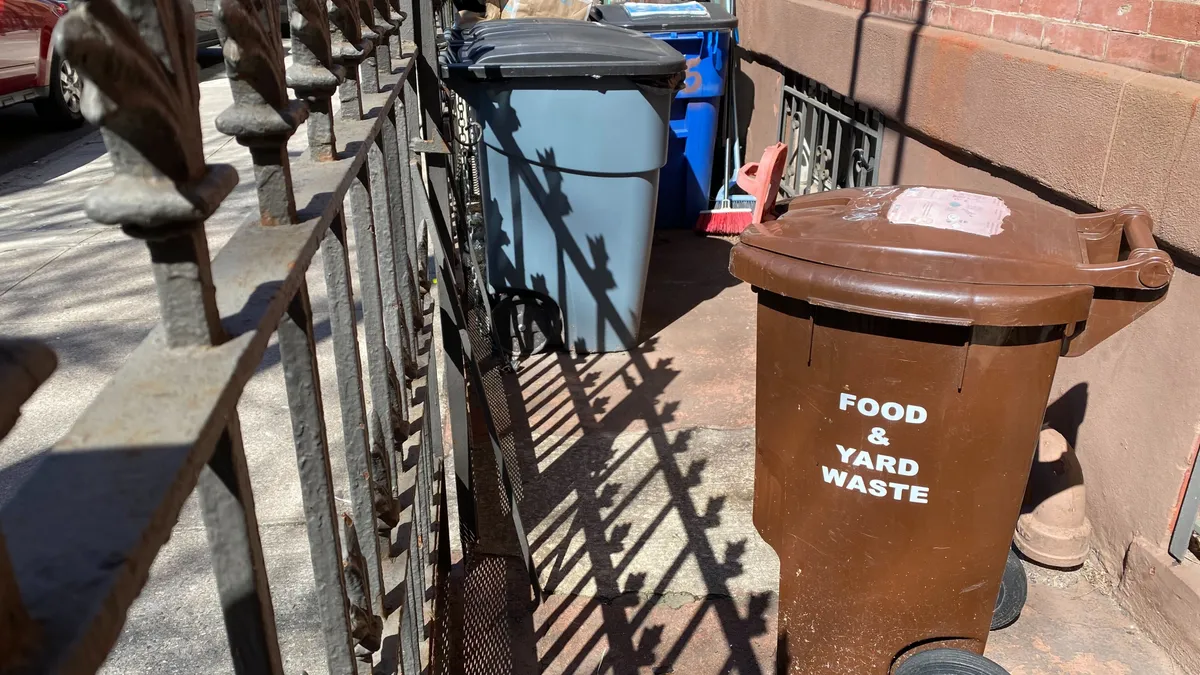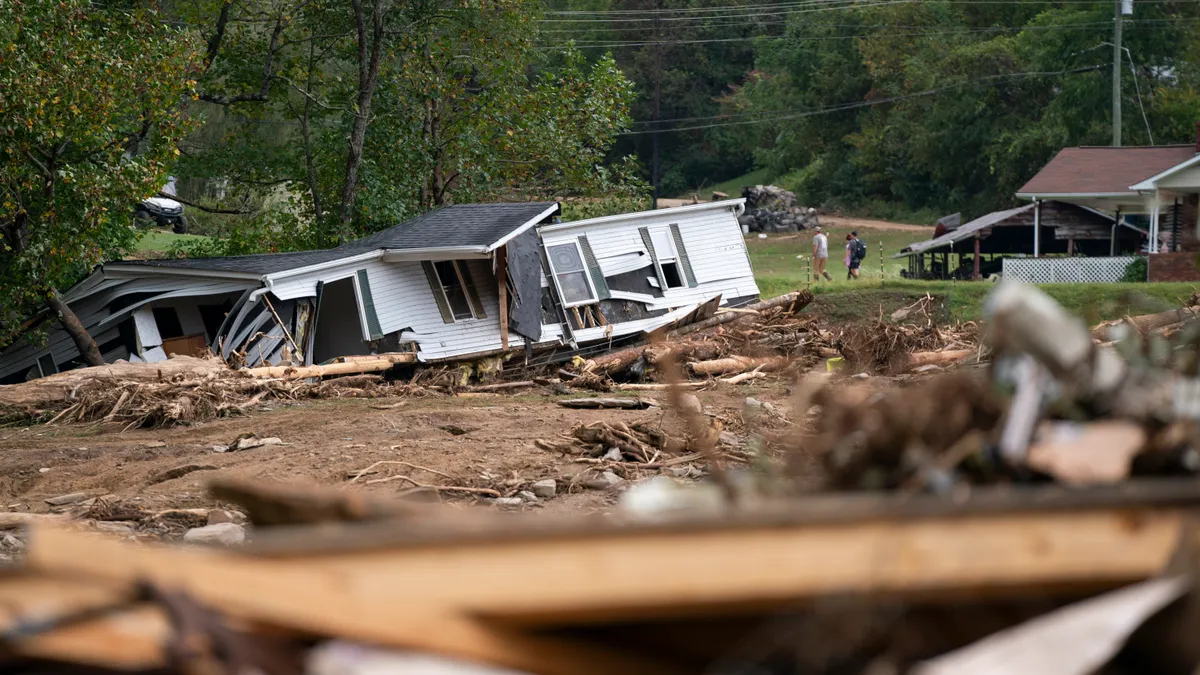New York City’s five borough presidents last month held a joint press conference to appeal to Mayor Eric Adams with a lofty proposal: Let's plant a million trees across the city by the end of the decade.
The effort would build on the city’s previous Million Trees initiative, which ended in 2015 under Mayor Bill de Blasio. Other cities — including Los Angeles, Denver, Philadelphia and Sacramento, California — have their own tree-planting initiatives. Trees are widely touted as having essential environmental benefits: carbon sequestration, natural cooling for urban heat islands and stormwater absorption, on top of well-studied mental health benefits. But urbanization has eaten away at the country’s canopy. A 2018 U.S. Forest Service study found that 36 million trees were lost each year between 2009 and 2014, a 1% drop in trees nationally.
“It seems like trees are universally liked,” Brooklyn borough president Antonio Reynoso told the New York Times.
Experts warn, however, that despite all the benefits trees provide, poorly managed tree programs don’t do much good.
“It’s so important to not just go in and plant trees and impose policies,” said Christine Carmichael, founder of Fair Forests Consulting. “In the long term, that can damage the trees, the environment and the relationships with the very communities you are trying to help.”
In 2019, as a postdoctoral researcher at the University of Vermont, Carmichael published an influential study examining why roughly 25% of eligible Detroit residents opted out of a city-sponsored effort to plant trees on their streets as part of a city-sponsored program. Her research found that many community members didn’t trust the city to maintain the trees, fearing they'd be left with the responsibility to water, rake leaves and clear dead branches.
Carmichael has used her consulting firm to work with cities on how to best engage historically disadvantaged and under-resourced communities in tree-planting initiatives. Working with residents, she said, can avoid some of the Detroit program's pitfalls while also ensuring that trees are allocated where they're needed most.
“What’s at risk here is the potential for households, especially the Black residents and people of color, feeling ignored and devalued as people again,” Carmichael said. Programs implemented without community buy-in "can reproduce that kind of historical divide, which can be even more impactful given all of the health and environmental benefits that can come with new trees.”
Righting past wrongs
Ben Wilinsky, director of partnerships and innovation at the Arbor Day Foundation, said cities have long looked to tree pledges as part of wide-reaching climate change initiatives. Increasingly, cities are also using tree planting projects as a way to right historic wrongs, he said.
A 2021 study published in NPJ Urban Sustainability that examined 37 U.S. cities found that neighborhoods that had been redlined to isolate people of color in certain neighborhoods had an average of 23% tree canopy, compared with 43% in historically White neighborhoods. Given that redlined neighborhoods also tend to have worse air quality and higher heat risks, cities have seen tree planting as a tool to lift up those neighborhoods.
“Heat kills, and trees cool,” Wilinsky said. “They’ve been seen as a ‘nice-to-have’ for a long time. Now we know they’re a ‘must-have.’”
Cleveland – which was once known as the Forest City – has lost about half its canopy since the 1950s, according to the Cleveland Tree Plan. That has especially hurt communities of color, said David Wilson, who serves as co-director of the Cleveland-area Black Environmental Leaders Association. The environmental justice group has worked with the city and other partners on a tree plan to "reverse the issues related to tree loss," including poor air quality, heat effects and mental health impacts.
While Carmichael says some cities or nonprofits still impose a top-down approach to urban forestry without engaging residents of affected neighborhoods, cities are increasingly highlighting equity as a key strategy. Pittsburgh, for example, debuted an Equitable Street Tree Investment Strategy to distribute tree canopies more fairly, focusing on low-income and Black communities. Holyoke, Massachusetts, developed its own Urban Forest Equity Plan, which will engage community partners in four neighborhoods that have less tree canopy.
Wilson said it is crucial to have those voices at the table to not just increase community buy-in, but also to provide a wider perspective on the scope of environmental issues and solutions.
"We know the real experts in the room are typically ones that have the lived experience of their own space and their own neighborhood, but we have found those voices are typically devalued when you have other 'experts' who have a title or certain authority granted to them," Wilson said. "Residents have to be at the table because they are not just living the experience, but they have the local knowledge and the historical context for everything that is happening."
Growing in an urban jungle
As New York City looks ahead at a potential new tree-planting campaign, its previous one could offer some lessons. A quarter of the trees planted in the original initiative died or were missing shortly after planting, according to research from Cornell University. A Nature Conservancy report found that areas flooded by Superstorm Sandy in 2012 saw more significant canopy loss because the trees were not tolerant to saltwater.
Other initiatives have not reached their lofty goals. Denver, for example, curtailed its million-tree goal before planting even half of that number between 2006 and 2013, instead choosing to focus its program on maintenance and protection of existing trees, according to the Denver Post.
The reality is that nurturing trees in concrete jungles isn’t easy. Planting a million trees also means caring for a million new trees — a far less sexy idea. In Los Angeles, private companies in charge of tree trimming raised their contract bids by at least 50% between 2009 and 2013 at the same time that city-funded crews were cut, leaving some areas uncared for, the LA Times reported in 2014.
Cornell University professor Nina Bassuk said it’s not enough to just plant a bunch of new trees if they’re not well suited for the environment.
“If you want the ecosystem benefits like shade and stormwater reduction, you’ve got to plant a bigger tree,” said Bassuk, who leads the university’s Urban Horticulture Institute. “To get a bigger size, you need enough rooting space for the tree to grow. It’s not easy to do that under pavement.”
Bassuk was part of a Cornell team that developed a structural soil that uses a combination of crushed stone and soil to provide a load-bearing surface under sidewalks while also giving room for roots to grow. That’s essential when putting new trees in crowded urban spaces, where it may not be possible to cut large holes or dig out space for extensive root systems, she said.
“If you weren’t able to plant a tree where there’s infrastructure, we would never plant any trees,” Bassuk said.
Climate change creates extreme weather conditions and potential flooding and trees planted in the past might no longer be suitable. Emphasizing primarily one type of tree can leave those trees at risk of disease. Worcester, Massachusetts saw a beetle infestation wipe out its street trees, 80% of which were Norway maples, in the early 2000s. The city has since replanted under a program that specified no more than 10% of new trees could be any one species.
Arbor Day Foundation’s Wilinsky said cities will no doubt continue to invest in their forestry programs, especially as more evidence emerges about the benefits of green space. The key, he said, is to make sure trees are treated as part of a larger environmental system and not a one-size-fits-all solution.
“Trees do so much good. They filter the air, they create our oxygen, they shade our homes, they sequester carbon,” Willinsky said. “That’s why we look at trees as a solution to climate change or health or equity or environmental injustice. And each of those is good, but only to the extent that you see how they work together."



















